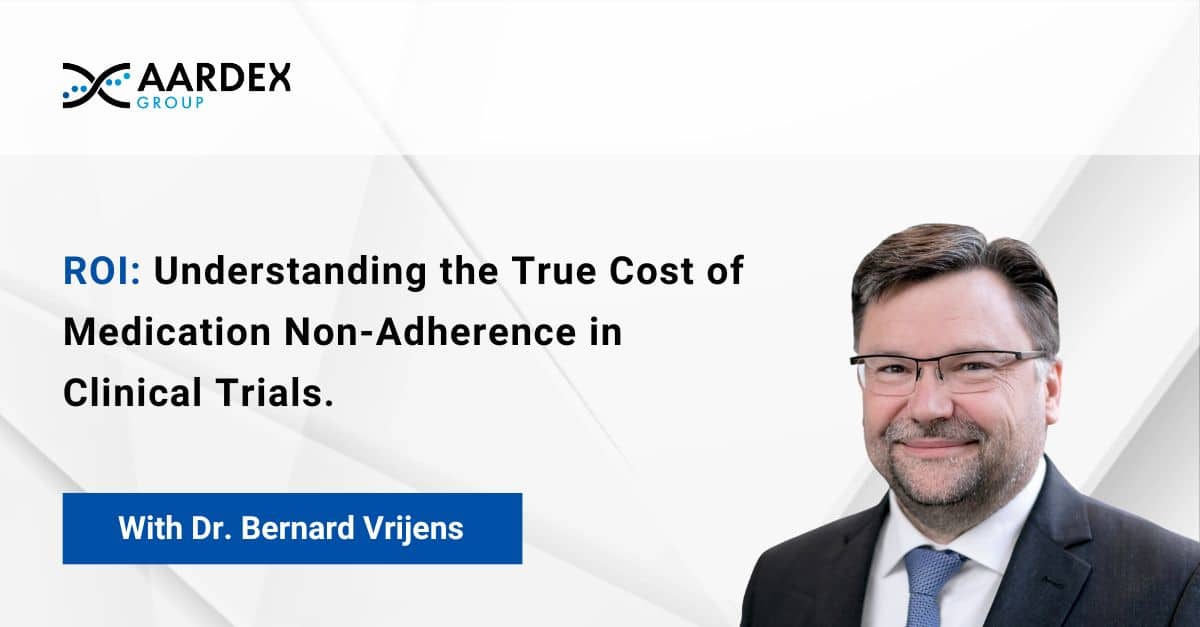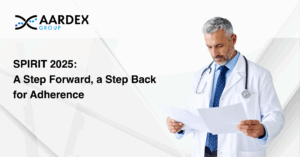In this article, Dr. Vrijens shares his thoughts on the need for dose optimization in the interests of balancing safety and efficacy.
How we use language has a huge bearing on the meaning we convey. Take the word ‘overdose’, for example. Employed as a noun, we might be triggered to think of a dangerous and possibly fatal event. Used as a verb in a clinical context, however, and we could simply be describing the act of administering a drug at a sub-optimal level without harm or consequence. One word and two entirely different perspectives.
For healthcare professionals (HCPs), sub-optimal dosing is a perpetual challenge related to the inherent variability of a patient population and its interactions with different drugs. Wary clinicians can sometimes, therefore, decide to prescribe at levels below the approved dose as they aim for maximum efficacy while minimising any potential adverse impact on patients, particularly the elderly.
To a general, non-clinical population, it might be surprising or even shocking to learn that HCPs would have cause to ‘temper’ an authorised dose to avoid unnecessarily ‘overdosing’, and yet research shows this situation is not uncommon. In 2019, Ogata et al published a paper in the respected journal PloS One entitled ‘Lower-dose prescriptions in the post-marketing situation and the influencing factors thereon’. The aim of their study was to reveal the levels to which pharmaceutical products are being prescribed at a lower dose than the threshold granted for post-marketing use.
The research assessed newly approved products that were all administered orally on a daily basis, with the authors collecting prescribing information from recognised medical databases. Where the dose prescribed was lower than the approved level for at least 30% of prescriptions, the products were labelled as ‘lower-dose prescription drugs’.
A total of 113 products met the criteria for investigation, all of which were approved as new molecular entities (NMEs) between 2005 and 2014. The analysis identified 27 as being lower-dose prescription drugs, which represents almost a quarter (23.9%) of the sample.
Digging into the detail, the study found that lower-dose prescribing was correlated particularly with drugs where the maintenance dose differs from the initial dose and where there is “upward/downward dose adjustment” to ensure tolerability. The results also show that dose lowering is evident across a broad range of therapeutic areas but that levels are higher among drugs treating Central Nervous System conditions and most notably for drugs classified as “antineoplastic and immodulating agents” for the treatment of cancer.
In their conclusion, the authors suggest that the level of drugs observed being prescribed at lower doses could indicate that such an adjustment would be applicable for an even greater number of patients.
While the findings of this study provide important insights into the issue of dose lowering, detailing the post-marketing prescribing of specific products, the theme of the study itself does not necessarily break new ground. Indeed, it is consistent with previous studies, such as that by Cross et al. in Pharmacoepidemiology and Drug Safety in 2002, which reported on the dosing of NMEs in the United States between 1980 and 1999. This found that a similar proportion of doses – approximately 20% – were changed in the post-marketing phase, and that the vast majority of these changes (80%) were dose reductions as a result of safety issues.
Similar findings were reported by Heerdink et al. in the same publication. Together, these papers give us the eye-opening statistic that, excluding antimicrobial drugs, one in every 4.5 of the drugs analysed has had at least a 50% lowering of the recommended dose.
Fast forward 17 years and the new analysis from Ogata et al. only confirms the continued presence of dose lowering, including its own equally eye-opening statistic for one drug studied where the proportion of deviated prescriptions exceeded 90%.
Looking at the causes behind the need for post-marketing dose optimization, the authors of the 2019 study reflect on the role of clinical trials and subsequent approval reviews, which provide the foundations for decisions on dosing. Early-stage trials are of course fundamental to understanding exposure, tolerability and dose optimization, with Phase III studies then seeking to confirm safety and efficacy.
And yet, as the authors point out, the restrictions that apply to studies for marketing authorisation mean “the information obtained from such clinical trials is limited”. They also highlight that Phase III trials often involve dosing levels that are close to the maximum-tolerated dose (MTD) since the focus is on safety and efficacy, while lower doses of a drug “are not sufficiently examined for dose optimization”.
With these weaknesses in mind, the authors highlight the potential value of drawing on real-world data (RWD) to help arrive at more informed decisions around dose optimisation. Together with low dosing, such approaches can be positioned as effective strategies for optimising dosing, maximising efficacy and minimising the risk of adverse reaction under the guidance of skilled physicians.
What they do not do, however, is solve the problem at its root. At a fundamental level, low dosing is a response designed to counter the higher levels of dosing observed in clinical trials predicated on the intent-to-treat (ITT) principle, which accepts that levels of adherence among trial candidates is poor. As such, the true root of the issue is undiagnosed medication non-adherence in clinical trials, so why not tackle this problem rather than adopting strategies further down the line that attempt to account for failings at the trial stage?
An effective answer would be to introduce adherence monitoring systems. This technology results in trial adherence being enhanced, more robust data being generated, and an improvement in the understanding of dosing response. This all allows for better dose optimization from the start and, ultimately, results in a reduced likelihood of clinicians later making decisions to prescribe lower doses in post-marketing situations.
Establishing the correct dosage and dosage regimen is a critical part of the development journey if a drug is to be safe and effective for patients. With studies showing that dose lowering has been an issue for decades, perhaps it is time that we harness the power of language and ask questions that can bring a new perspective to dosing accuracy.




